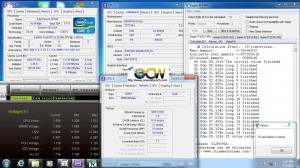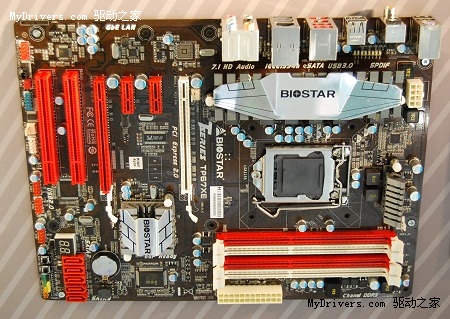Lucid Virtu MVP Hyperformance and VSync test
Lucid Virtu makes it’s first appearance on Z68 boards, allowing you to tap the power of the transcoding engine of the processor. On the BIOSTAR TZ77XE4, Virtu now supports Hyperformance and Vsync. By tapping the power of the graphics engine to help in the rendering, it increases the frame rate. Another feature if Virtu Vsync which helps to reduce tearing during fast action gaming.
We tested this feature On/Off with both processors.
In the chart, HVsync means Hyperformance and Vsync turned on. H means HyperFormance is Turned on. The rest are scores with Virtu feature enabled.
We ran the test by pairing up the board with a HIS 7970 Graphics card running Catalyst 12.4.
By default, rnuning the 3DMark11 will give a score of X2747 in this test. With HyperFormance enabled, the score jumped by 40.5%. With VSync enabled, the differences isn’t that noticeable. Likewise, with the Core i5-2500K, the score isn’t that far off without Virtu enabled. Once enabled, we see that the the Core i5-3570K leads by around 200 points.
So, what about 3Dmark Vantage running High mode test. With HyperFormance, the score rockets to 29134 (27%) , with Vsync enabled it shoots up to 37618.(64%) as compared to the default.
Likewise, the improvement can be seen using the older Core i5-2500K.
In DX11 Benchmark Heaven Demo V2.1 tests, the default frame rate is 82.2 fps, With Hyperformance, the score is improved to 111.7 fps while with VSync enabled, it drops to 92.5 fps.
This is peculiar because for the 2500K test, See get 81 fps without Vritu On. With HyperFormance it scores 96.2. When we enable VSync, it dropped below the 81 fps mark to 67.5 fps.
Perhaps, the driver still require more tuning.
In AVP, the score is quite consistent. With 3570K, VSync+HyperFormance or HyperFormance enabled only we get 98.1 fps. The default is 74.6 fps.
With Virtu MVP, it can boost graphics by up to 65%, based on our tests.







